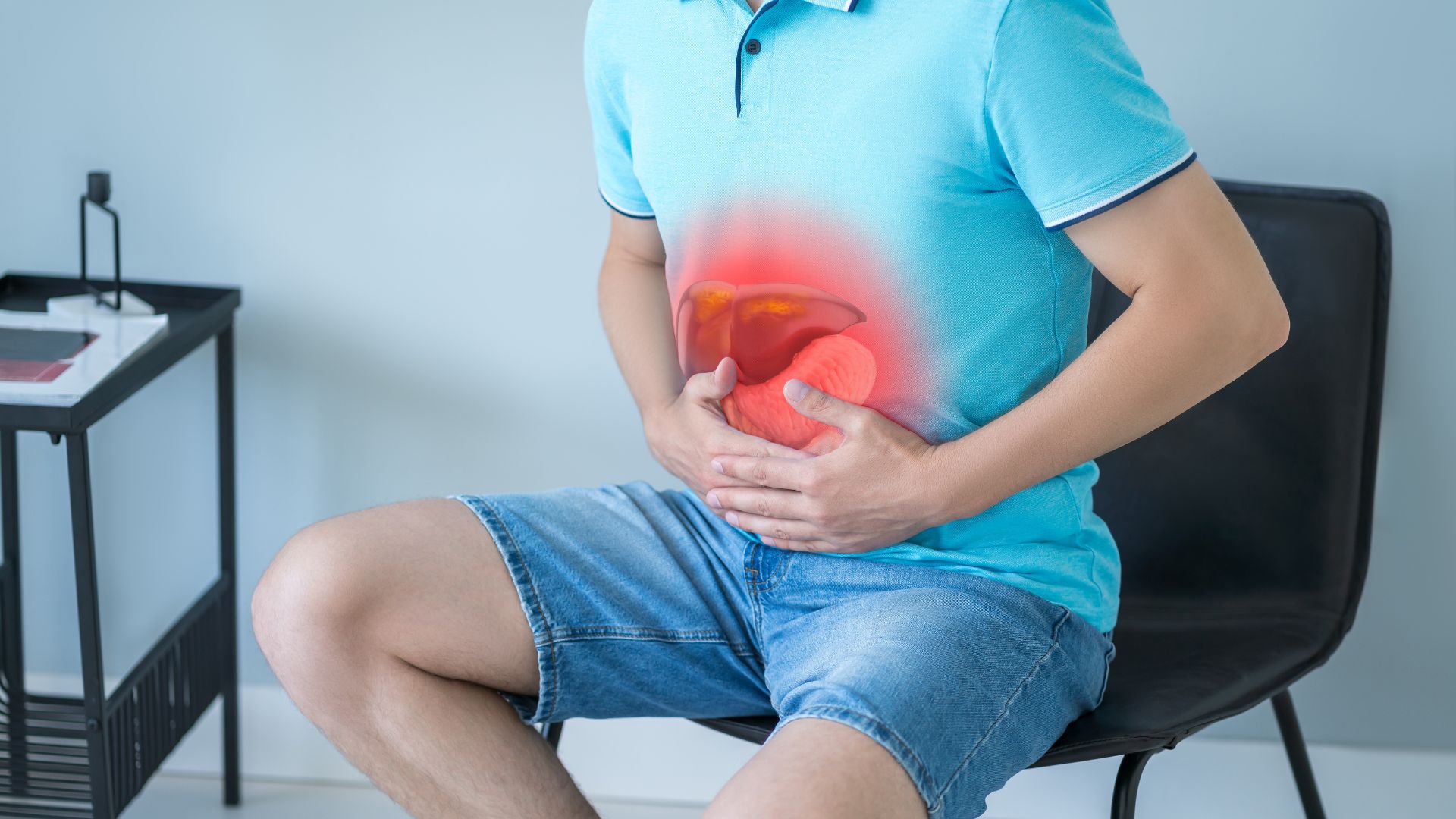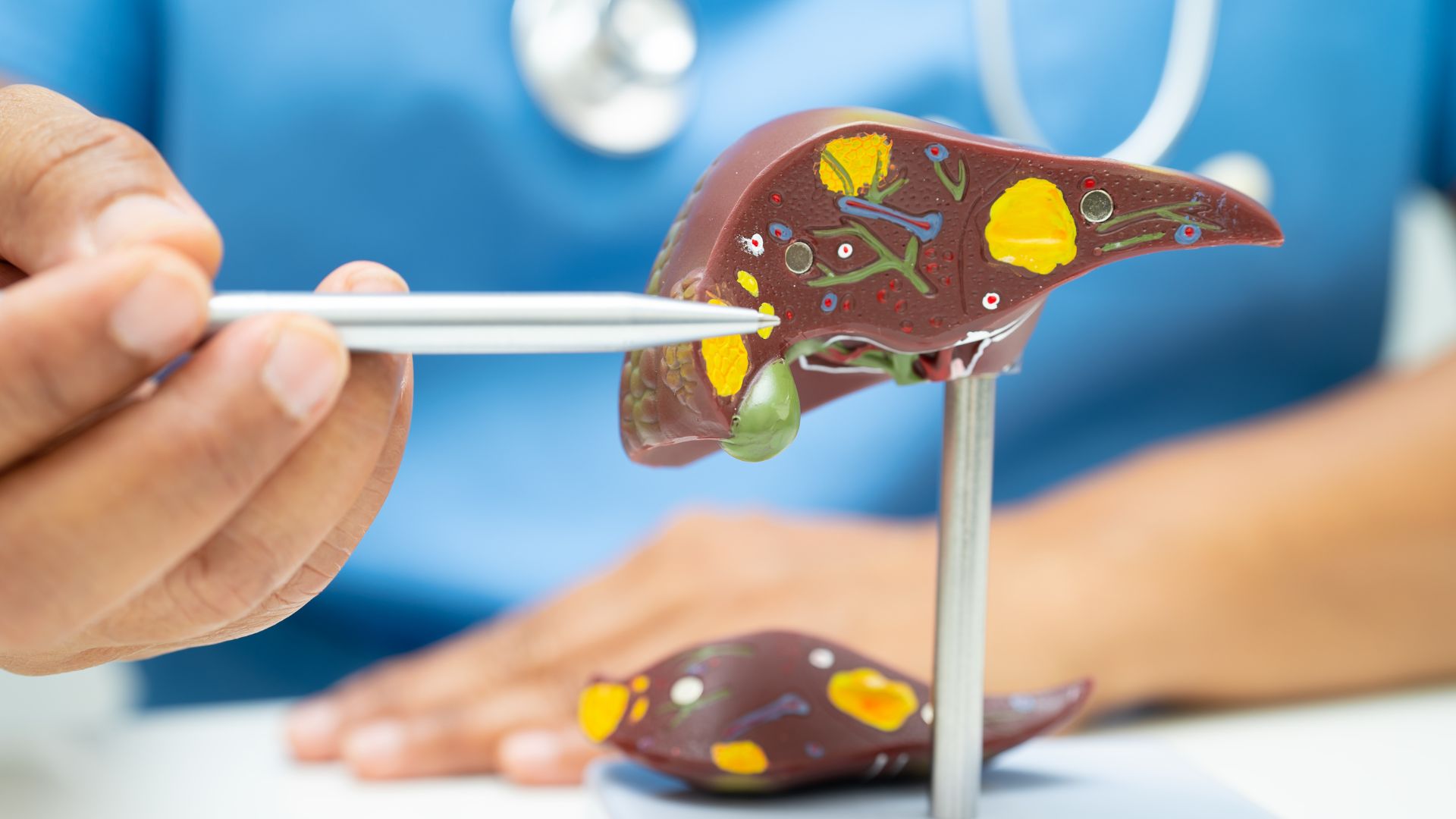Many people dismiss liver discomfort as minor. But could it be a sign of something more dangerous?
The short answer is yes: liver inflammation, also known as hepatitis, can have serious health implications depending on the underlying cause, severity, and how early it’s detected. It occurs when the liver becomes irritated and swollen, often due to infections, alcohol use, or autoimmune disorders.
Recognising early signs of liver inflammation is crucial to protect your liver from damage or failure. Read on to learn how to identify the symptoms of liver inflammation and the next steps you should take for proper diagnosis and treatment.
Table of Contents
ToggleWhat Is Liver Inflammation?
Liver inflammation, known as hepatitis, is a condition where your liver is inflamed and swollen from various causes including:
- Viral or bacterial infection
- Autoimmune disorders
- Long-term alcohol abuse
Inflammation is not always an enemy. Acute inflammation is an immediate, short-term response to an injury or toxins that is essential to recruiting repair proteins. When the liver detects foreign toxins, it activates the immune system, which naturally causes inflammation as part of the healing process. The repair process is indicated by elevated levels of liver enzymes which help produce bile, an important fluid that breaks down these toxins.
However, problems occur when inflammation is dysregulated; it persists even after then toxins have been removed. This could be due to a persistent injury, an autoimmune disorder, or a liver dysfunction. Consequently, it increases the risk of liver damage, such as scarring or cancer.
What Causes Liver Inflammation?
Both external and internal factors can trigger liver inflammation. External factors are typically caused by an infection or poor diet, while internal factors involve dysfunction in the body’s immune system or metabolism.
Viral or bacterial infection
There are three common types of viral hepatitis: Hepatitis A, B, and C. Hepatitis A is commonly obtained from contaminated food, and usually cause acute inflammation that resolves on its own.
On the other hand, Hepatitis B and C, caused by shared bodily fluids, have a greater risk of developing chronic inflammation, which could lead to long-term liver damage if untreated. Contamination can come from:
- Shared injectables e.g. needles or other items contaminated with blood or other body fluids e.g. toothbrush
- Having sex with someone with hepatitis B/C
- Blood transmission from mother to child
Less commonly, bacterial infections such as leptospirosis or syphilis can also inflame the liver. In some cases, abscesses may develop, which are pus-filled sacs that feel painful, especially if they burst.
Alcohol abuse
One of the liver’s functions is to break down alcohol. This process produces an intermediate metabolite called acetaldehyde, which is toxic to the liver cells and induces inflammation. Normally, acetaldehyde is broken down by liver enzymes. But too much alcohol consumption will produce more acetaldehyde than the liver can handle, resulting in alcoholic hepatitis. Without intervention, this can escalate to cirrhosis and even liver failure.
Medications
Toxic hepatitis is a condition where toxins from medications or other chemicals damage the liver. Over-the-counter medications like acetaminophen and nonsteroidal anti-inflammatory drugs (NSAID) such as ibuprofen have been noted to induce toxic liver disease, especially when taken in high doses for a long time. Likewise, working in industrial sites that expose you to chemicals can be toxic to the liver.
Autoimmune disorders
This is a chronic inflammatory condition caused by the immune system mistakenly attacking healthy liver tissue. While the exact cause is unknown, it is most likely from a genetic mutation (inherited or random) that is then triggered by certain environmental factors. Without treatment, autoimmune hepatitis can progress to cirrhosis or liver failure.
Metabolic Disorders
As the liver is one of the main organs involved in metabolism, metabolic dysfunctions from risk factors like obesity, diabetes, non–alcoholic fatty liver disease (NAFLD) and non–alcoholic steatohepatitis (NASH) can eventually damage the liver, inducing inflammation.
Signs and Symptoms You Shouldn’t Ignore
Acute liver inflammation does not always cause physical symptoms. However, as it persists, it can disrupt liver function identified through physical and internal warning signs:
- Upper right abdominal pain
- Nausea and vomiting
- Fever, especially in hepatitis-caused inflammation
- Jaundice
- Unexplained weight loss
- Fatigue
- Dark urine or stool: Indicates that the liver fails to process bilirubin, a yellow product from the breakdown of red blood cells.
Symptoms of liver inflammation typically do not appear until it has become chronic. By then, the liver is likely damaged, triggering a hyperactive immune system and elevated liver enzymes (ALT and AST). If you experience these symptoms, you should see a doctor immediately.
When Is Liver Inflammation Dangerous?
Inflammation helps metabolism and repair. However, when inflammation persists, various problems arise:
Liver cirrhosis
Liver Cirrhosis is a condition where is scarring of the liver. Inflammation recruits fibrous tissues like collagen to help with healing. But when there is too much collagen (due to chronic inflammation), it thickens and stiffens the liver, which can block blood vessels and impair liver function. If left untreated, it could worsen to liver failure.
Liver cancer
Chronic inflammation releases harmful radicals that can cause DNA mutations. It also damages or kills liver cells, forcing the body to make new ones quickly. The more rounds of replication, the more likely mutations will occur, increasing the risk of developing liver cancer.
Portal hypertension
Scar tissues from long-term inflammation may compress the hepatic portal vein, which transports nutrients and toxins to the liver for elimination. This compression causes high blood pressure and other symptoms like jaundice and fatigue. If the pressure becomes too high, it could even rupture veins in the stomach or intestines.
Hepatic encephalopathy
It is a brain dysfunction caused by a high level of toxins that was unprocessed by the liver (due to damage or failure). Patients experience cognitive changes including confusion, fatigue, personality alterations, and even coma.
How Liver Inflammation Is Diagnosed
Liver inflammation is diagnosed through visualisation and blood testing:
Liver screening
Liver screening imaging tests are essential for visualising changes in the liver’s shape, texture, and tumour growth. MRI, CT scans, and ultrasounds are common screening techniques. Ultrasounds identify whether the liver is enlarged; CT scans produce more detailed cross-sectional images of the liver tissue to detect tumour and inflamed tissues; and MRI offers a radiation-free option for high-risk individuals like pregnant women.
If an anomaly is found, a small liver tissue will be extracted (biopsy) and sent for laboratory tests to determine the exact cause of inflammation, making a critical tool for personalised treatment planning.
Liver function tests
Liver function tests are a group of blood tests that measure specific enzymes and proteins required for liver function. When there is liver damage, these enzymes are elevated to attempt to repair the damage. Key markers include:
- Alanine aminotransferase (ALT): Enzyme that converts proteins into energy. Normal range is between 0-31U/L
- Aspartate aminotransferase (AST): Enzyme that breaks down excess amino acids. Normal range is between 0-37 U/L
- Alkaline phosphatase (ALP): Breaks down proteins, with normal levels ranging between 35-129U/L
- Bilirubin: Byproduct during breakdown of red blood cells. If the liver is functioning, bilirubin levels should be low at around 0-17umol/L.
These tests are quick and simple: the doctor will draw a small sample of blood from your arm, typically around the inside of your elbow. The sample will be sent for laboratory testing, and you should be informed of the results within a few days.
You will need to fast for 8 to 12 hours before the test. Avoid any alcohol and inform your doctor of any medications or supplements taken prior.
Treatment and Lifestyle Tips
Preventive steps can lower the risk of liver damage:
Medical intervention
For inflammation caused by viral or bacterial infections, vaccines and antibiotics can curb inflammation respectively. However, it is important to complete the entire prescription to ensure that the pathogen is fully eliminated.
Diet
An anti-inflammatory diet keeps inflammation at bay, minimising long-term complications to the liver. This involves whole, nutrient-dense foods such as leafy greens, berries, salmon, nuts, and olive oil. Avoid processed foods and saturated fats: too much could lead to non-alcoholic fatty liver disease, putting the liver under more stress.
Reduce alcohol use
Eliminating alcohol gives the liver a chance to recover, reduces the risk of liver scarring and failure. For people struggling to quit alcohol, professional support and treatment programs are available to help make the transition safer.
Maintain a healthy weight
Keeping a healthy weight reduces the risk of developing non-alcoholic fatty liver disease. Other than diet, regular exercise is key to overall health. Aim for at least 150 minutes of moderate to vigorous exercise daily. If you’re too busy for a dedicated exercise time, try to incorporate more movement into your daily routine: alight one stop before your actual stop and walk home to get some extra steps in.
Treatment: Liver Surgery or Transplant
In severe cases of liver inflammation where there is extensive damage or liver failure, surgical intervention may be necessary to remove the dead or diseased tissue. In advanced liver failure, a liver transplant may be the best option.
Even after surgery, regular monitoring, medication, and a health-conscious lifestyle is required to maintain long-term health.
FAQs
1.Can liver inflammation go away on its own?
Short-term inflammation caused by infection can be resolved without treatment once treatment is received. However, persistent inflammation rarely goes away on its own and may progress into medical conditions like fibrosis.
2. What foods reduce liver inflammation?
Anti-inflammatory foods include greens like spinach and kale, omega-3 rich fish like salmon, nuts, seeds, whole grains like oats. Avoid processed foods and excessive saturated fats.
3. Is liver inflammation always caused by hepatitis?
No, liver inflammation is not always from hepatitis. Other triggers like alcohol abuse, certain medications, autoimmune disorders, and non-alcoholic fatty liver disease are associated with liver inflammation.
4. Is fatty liver the same as liver inflammation?
No, fatty liver is the buildup of fats in liver cells, which can lead to inflammation. This is also known as non-alcoholic fatty liver disease (NAFLD) or non-alcoholic steatohepatitis (NASH).
5. What does liver inflammation feel like?
Liver inflammation may cause discomfort or pain in the upper right abdomen, fatigue, nausea, and fever. In advanced stages, jaundice, dark urine, and unexplained weight loss may develop. Since many cases are asymptomatic early on, routine liver function tests are important if you’re at risk.
Conclusion
Liver inflammation is more common than you might think, with causes varying from infections to poor lifestyle choices. While it starts with mild or no symptoms, inflammation can manifest into serious health complications if left untreated.
Early detection can make all the difference. If you’re experiencing symptoms or fall into a high-risk category, it’s vital to speak with your doctor. Your liver does a lot for you; it’s time to take care of it in return.





